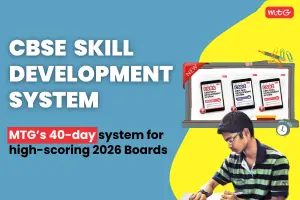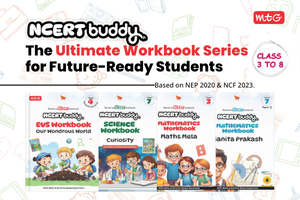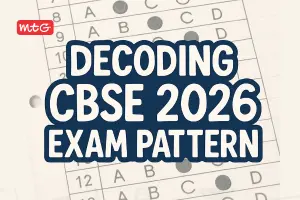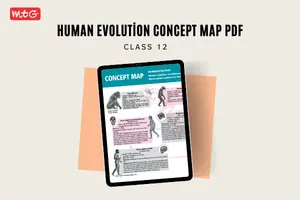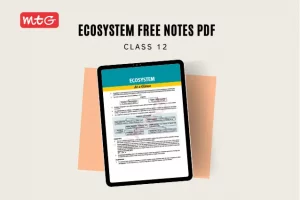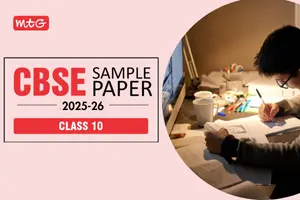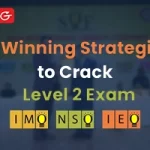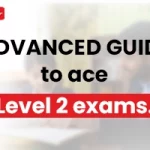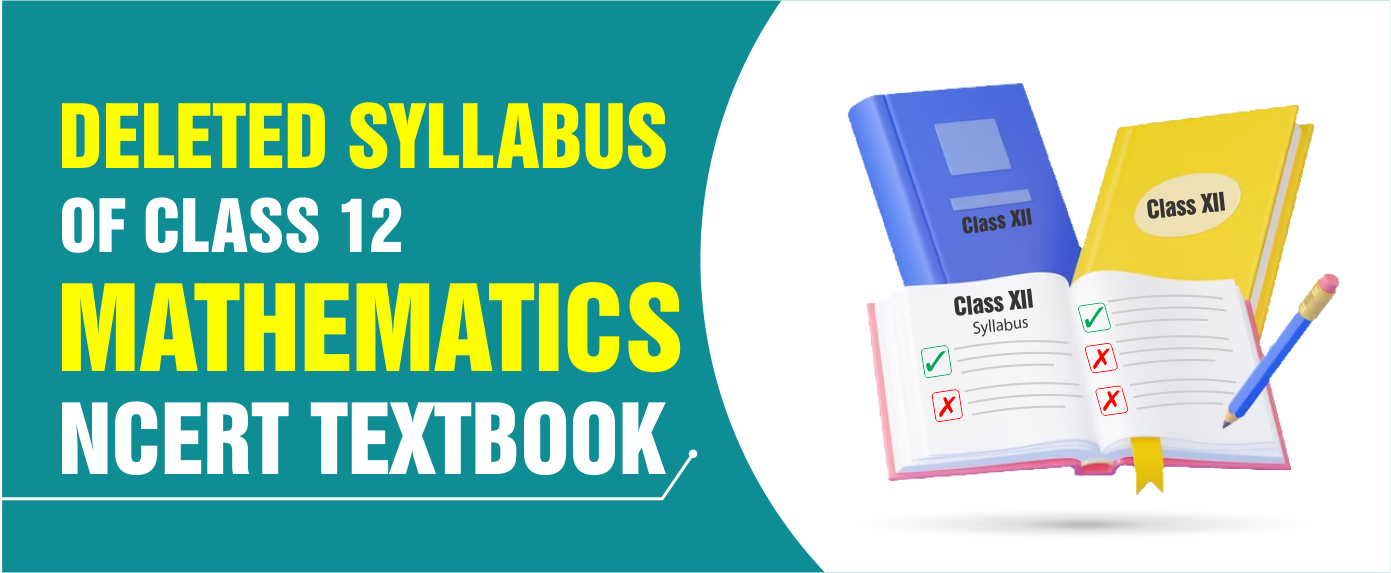
To give students a more modern and interesting learning experience, NCERT has substantially revised the smathematics textbooks in compliance with the National Education Policy (NEP) in 2020. According to NEP 2020, “the reduction in the material will help in increased curriculum flexibility and the renewed emphasis on productivity rather than rote learning.” The new curriculum has been slimmed down to lessen the student’s strain and promote experiential learning. Source – NEP Final
The NCERT Mathematics textbooks will be available in at least 22 languages, mentioned in the eighth schedule of the Constitution, including Hindi, English, Bengali, Assamese, Gujarati, Kannada, Sanskrit, Punjabi, Sindhi, Manipuri, Urdu, Malayalam, Odiya, and Kashmiri, among others.
Updated Class 12 Maths Syllabus – CBSE Class 12 Maths Syllabus 2023-24
Topics Removed from the Revised Textbooks
In light of the NEP 2020 policy, almost 30% of the material in the NCERT Mathematics textbook is likely to be rationalised for session 2024-2025. MTG has long been at the forefront of offering top-notch educational materials to students all around the nation. To deliver the greatest content that is in accordance with the latest curriculum, we always stay in tune with the most recent trends and policies in education. We are quick in adapting to and incorporating the most recent improvements in our publications, especially when it comes to the context of the most recent edition of the NCERT Mathematics textbook on our CBSE Books for Class 12. The content that has been removed from NCERT Mathematics for class 12 for the academic year 2024–2025 is detailed in the table below.
| Class-12 NCERT Chapter | Dropped Math Chapters (Part 1 and 2) |
|---|---|
| Chapter 1: Relations and Functions | 1.4 Composition of Functions and Invertible Function (upto ‘This leads to the following definition’) Full Pages Examples 24 and 25 Full Pages Ques. 12 and 13 Examples 45 and 49 Ques. 1–3, 6–7, 9, 11–14, 18–19 Summary Points 11–13 and 15–19 |
| Chapter 2: Inverse Trigonometric Functions | 2.3 Properties of Inverse Trigonometric Functions (Except Examples 4, 7 and 8; Alternative Solution of Example 5 Ques. 3, 4, 6, 12, 14, 15 Examples 10, 11, 12, 13 Ques. 8, 12, 17 (Miscellaneous Exercise) Summary Points 8–13 |
| Chapter 3: Matrices | 3.7 Elementary Operations (Transformation) of a Matrix 3.8.1 Inverse of Matrices by Elementary Operations (Retain Ques. 18 of Exercise 3.4) Example 26 Ques. 1–3 and 12 (Miscellaneous Exercise) Third Last Point of Summary |
| Chapter 4: Determinants | 4.3 Properties of Determinants Miscellaneous Examples 30–32 and 34 Ques. 2, 4–6, 11–15 and 17 (Miscellaneous Exercise) Summary Points 4–11 |
| Chapter 5: Continuity and Differentiability | Examples 22 and 23 Example 27 5.8 Mean Value Theorem Exercise 5.8 and Miscellaneous Example 44 (ii) Ques. 19 (Miscellaneous Exercise) and Summary points 5 (derivatives of cot–1x, sec–1x, cosec–1x), 7 and 8 |
| Chapter 6: Application of Derivatives | 6.4 Tangents and Normals 6.5 Approximations Examples 45, 46 Ques. 1, 4–5 and 20–24 (Miscellaneous Exercise) Points 4–10 in the Summary |
| Answers | Answers of Exercises |
| Chapter 7: Integrals | Points (xi)–(xiii) in the List of Derivatives 7.2.1 Geometrical Interpretation of Indefinite Integral 7.2.3 Comparison between Differentiation and Integration 7.6.3 Type of Integral 7.7.1 Definite Integral as the Limit of a Sum Ques. 19, 32, 40 and 44 Point 2 in the Summary (xiv) and (xv) in Some Standard Integrals |
| Chapter 8: Application of Integrals | 8.2.1 The Area of the Region Bounded by a Curve and a Line Ques. 3 and 6–11 in Exercise 8.1 8.3 Area between Two Curves Examples 11, 13 and 14 Ques. 2–3, 6–7, 8–15, 18– 19 (Miscellaneous Exercise) Last Two Points of the Summary |
| Chapter 9: Differential Equations | 9.4 Formation of Differential Equations whose General Solution is Given Example 25 Ques. 3, 5 and 15 (Miscellaneous Exercise), Point Six of the Summary |
| Chapter 10: Vector Algebra | 10.7 Scalar Triple Product 10.7.1 Coplanarity of Three Vectors |
| Chapter 11: Three Dimensional Geometry | 11.2.1 Relation between the Direction Cosines of a Line 11.3.2 Equation of a Line Passing through Two Given Points, Ques. 8–9 (Exercise 11.2) 11.6 Plane 11.7 Coplanarity of Two Lines 11.8 Angle between Two Planes 11.9 Distance of a Point from a Line 11.10 Angle between a Line and a Plane Ques. 1, 2, 5, 7–8, 10–19, 21–23 (Miscellaneous Exercise) Summary Points 13, 20–24 |
| Chapter 12: Linear Programming | 12.3 Different Types of Linear Programming Problems Summary Points 2–9 |
| Chapter 13: Probability | 13.6 Random Variables and Its Probability Distributions Example 22 and 23 13.6.1 Probability Distribution of a Random Variable 13.6.2 Mean of Random Variables 13.6.3 Variance of a Random Variable 13.7 Bernoulli Trials and Binomial Distribution Example 34 and 35 Ques. 5–7, 9–11 (Miscellaneous Exercise) Last 3 Points of the Summary |
| Answers | Answers of Exercises |
Preparing for CBSE Class 12? practice from – CBSE Sample Paper Class 12 for 2023-24 Boards
What is the basis of Content Rationalisation?
According to Union Minister of State for Education Annapurna Devi, “Overlapping with similar content included in other subject areas in the same class; similar content included in the lower or higher class in the same subject; difficulty level; content, which is easily accessible to children and does not require much intervention from the teachers and can be learned through self-learning or peer learning; content, which is not relevant in the present context or outdated and taking care of the learning outcomes already developed across the classes, are among the criteria adopted for rationalization of the content load.” Source – NCERT textbooks rationalised to compensate for Covid-19 time loss: Education ministry
Trending – Ideal Study Timetable for Class 12 Science Stream
You can always count on MTG to provide up-to-date study material with 100% error-free content. We give our best effort to provide students with the necessary knowledge and skills to succeed in their academic pursuits and promote critical thinking, creativity, and innovation.
Stay updated with MTG!
Also Check – Deleted Syllabus of Class 12 (2023-24) From NCERT Textbooks


